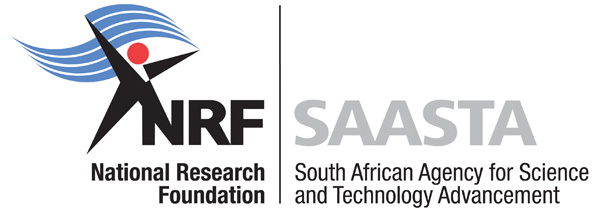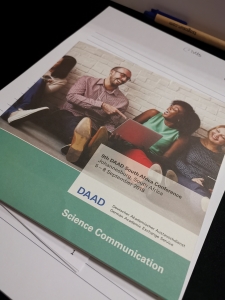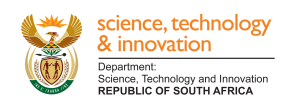Science communication by young African researchers
Young researchers from across Sub-Saharan Africa came together to network at the 9th DAAD South Africa Conference in Johannesburg from 5 to 8 September 2019. DAAD-NRF In-Country scholarships holders and DAAD In-Region scholarship holders, who have come from other Sub-Saharan African countries to study at institutions in South Africa, discussed ideas around the conference theme of Science Communication: the communication of research to broader society and communication within academia.
On Saturday, 7 September 2019, a panel discussion focused on how South Africans communicate within academic circles – who are the current voices of science, why are they the voices of science, who is hearing these voices and what is the impact of these voices? Paula Assubuji from the Heinrich-Böll-Stiftung facilitated the panel session and panellists included Prof. Jan Botha from the Centre for Research on Evaluation, Science and Technology (CREST), Nomfundo Faith Dlamini from the South Africa Cities Network, Prof. Pamela Dube from the University of the Western Cape and Michael Ellis from the South African Agency for Science and Technology Advancement (SAASTA).
The panel highlighted the September 2019 issue of the well-known publication, the Scientific American, entitled; Truth, Lies and Uncertainty: Searching for Reality in Unreal Times. Michael Ellis discussed how, in the past weeks, chaos has descended on parts of South Africa and this has been paired with the emergence of destructive false news. Rapid, vivid and inaccurate communication has spread like a viral pandemic across South Africa, into other parts of Africa and even globally, with detrimental effects on human life, local infrastructure and international relations. These events highlight the changing communication environment and should challenge the research community to think differently about communication and their ethical responsibilities.
In the article, Editor in Chief, Mariette DiChristina states that “supporting better communication isn’t just something that’s nice to do. It’s vital to ensure a better future for humanity.” The panel looked at how it is important to be intentional and strategic in providing an environment for improved science communication and the development of communication skills, specifically for young researchers.
DiChristina continues by stating that, “the scientific process is an engine of human prosperity. For centuries it has been a driving force behind the advances in knowledge and well-being that we’ve enjoyed as a species. But none of us can benefit from that evidence-based engine if we don’t first communicate well with one another. We need to be able to share new ideas and the products of research. The recipients need to be able to trust that the information is true and to understand an innovation’s possible advantages or drawbacks so that we can make sound decisions as a society about what to do with it. If we cannot impart what we are learning to one another in this foundational way, we simply won’t continue to progress.”
The panel also discussed how an article by Joubert and Guenther in the South African Journal of Science showed that only 211 scientists – less than 1% of the scientific workforce of the country – were identified as visible in the public sphere.
The article highlighted that although only 8% of South Africans are white, 78% of the group of visible scientists were white, and 63% of the visible scientists were men. Using this example, the panel agreed on how influential the current cohort of DAAD-funded researchers could be by ensuring the they further develop their ability to effectively communicate with their peers and with the broader public.


 The South Africa Agency for Science and Technology Advancement (SAASTA) is a business unit of the
The South Africa Agency for Science and Technology Advancement (SAASTA) is a business unit of the 